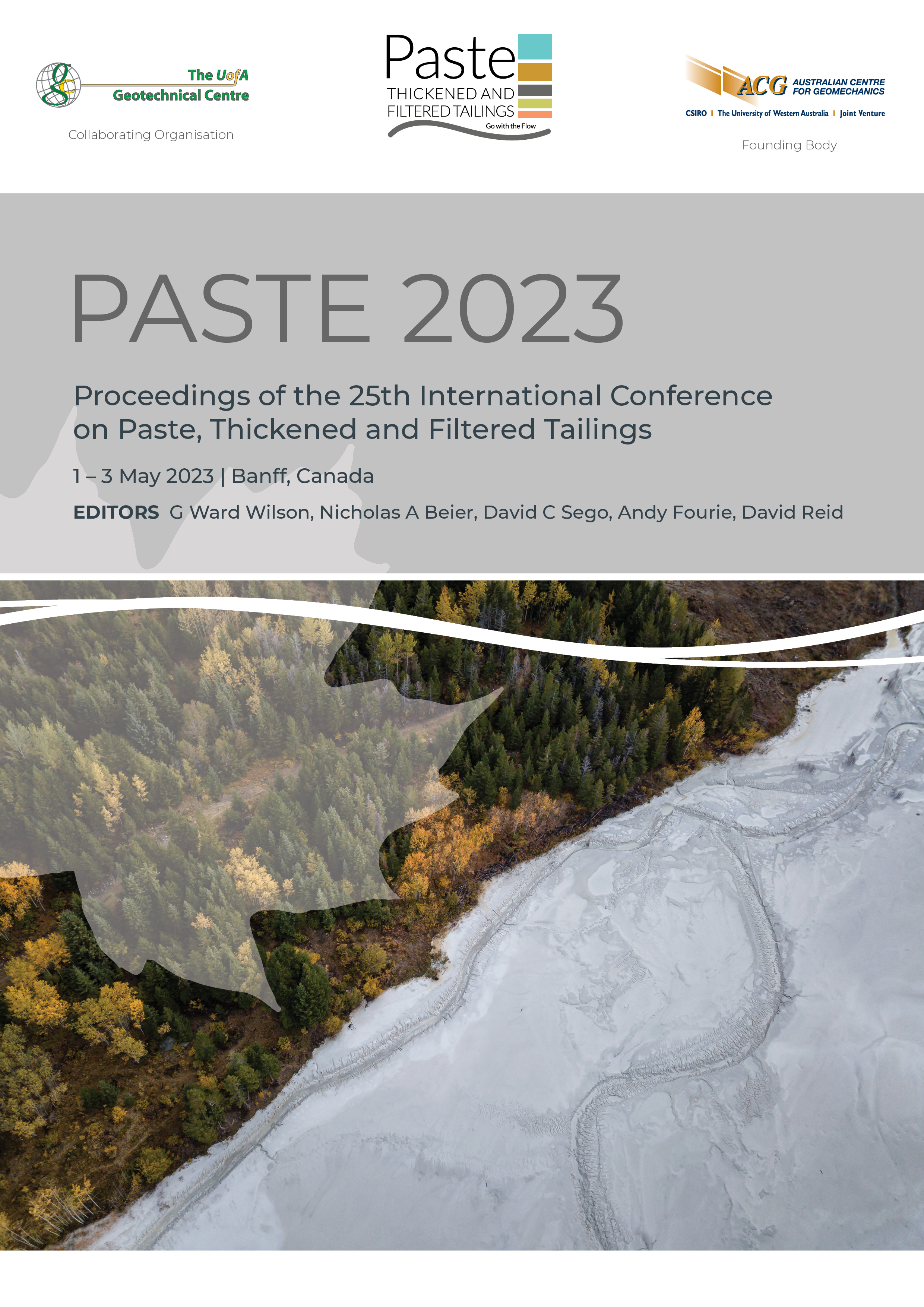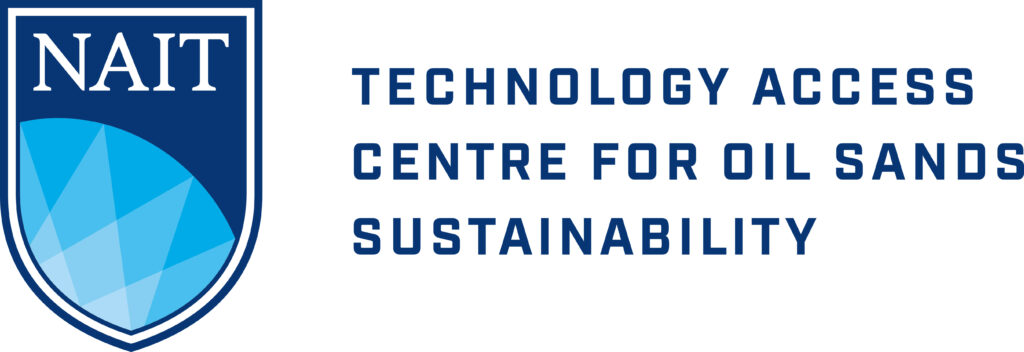Study of the effects of arsenic trioxide roaster waste dusts on the mechanical behaviour of cemented paste backfills

|
Authors: Mohammadi, A; Demers, I; Beier, NA; Benzaazoua, M |
DOI https://doi.org/10.36487/ACG_repo/2355_05
Cite As:
Mohammadi, A, Demers, I, Beier, NA & Benzaazoua, M 2023, 'Study of the effects of arsenic trioxide roaster waste dusts on the mechanical behaviour of cemented paste backfills ', in GW Wilson, NA Beier, DC Sego, AB Fourie & D Reid (eds), Paste 2023: Proceedings of the 25th International Conference on Paste, Thickened and Filtered Tailings, Australian Centre for Geomechanics, Perth, pp. 71-81, https://doi.org/10.36487/ACG_repo/2355_05
Abstract:
More than 237,000 metric tonnes of arsenic trioxide roaster waste dusts have been stored underground in the abandoned Giant Mine (Yellowknife, NWT). This waste arsenic trioxide material is approximately 60% arsenic, which is hazardous to both people and the environment. Long-term management of this waste is complex due to its large quantity, physical characteristics, and current storage conditions. Currently, the frozen block method was selected for the stabilisation of the arsenic. However, because of climate change and decline in the permafrost, as well as the current toxic form of dusts, there are some critical concerns about the long-term performance of this technology. Therefore, more permanent arsenic stabilisation techniques must be considered. Among these techniques, cemented paste backfill (CPB) technology as a high-density slurry mixture of binding materials, dewatered tailings, roaster waste dusts, and mixing water, can be considered as a potential arsenic trioxide stabilisation method. In this research, the effects of the addition of the arsenic trioxide dusts (10% wt.) within CPB on the mechanical strength of the cured pastes were evaluated. The CPB samples were prepared using general use (GU) cement and a mixture of GU cement and lime kiln dust (LKD) as binding agents based on the mix designs proposed by the response surface methodology. The solid content, binder type and dosage, and curing time were selected as the variables and the unconfined compressive strength of the samples was chosen as the response of the modelling. The results of the experiments and analyses revealed that the incorporation of arsenic trioxide dusts within the CPB results in the reduction in the strength of the pastes. However, increasing binder dosage, as well as solid content, could compensate for this adverse effect. Moreover, the CPB prepared using GU cement showed higher strength than the ones incorporating GU cement/LKD.
Keywords: arsenic trioxide dusts, arsenic stabilisation, cemented paste backfill, unconfined compressive strength, response surface methodology
References:
Arcadis 2017, Giant Mine State of Knowledge Review: Arsenic Dust Management Strategies, Giant Mine Oversight Board (GMOB), www.gmob.ca
Benzaazoua, M, Belem, T & Bussière, B 2002, ‘Chemical factors that influence the performance of mine sulphidic paste backfill’, Cement & Concrete Research, vol. 32, no. 7, pp. 1133–1144,
Bromstad, MJ, Wrye, LA & Jamieson, HE 2017, ‘The characterization, mobility, and persistence of roaster-derived arsenic in soils at Giant Mine, NWT’, Applied Geochemistry, vol. 82, pp. 102–118,
Bull, AJ & Fall, M 2020a, ‘Curing temperature dependency of the release of arsenic from cemented paste backfill made with Portland cement’, Journal of Environmental Management, vol. 269, no. March, p. 110772,
10.1016/j.jenvman.2020.110772
Bull, AJ & Fall, M 2020b, ‘Thermally induced changes in metalloid leachability of cemented paste backfill that contains blast furnace slag’, Minerals Engineering, vol. 156, no. April, p. 106520, .
Chen, Q, Zhang, QL, Fourie, A, Chen, X & Qi, C 2017, ‘Experimental investigation on the strength characteristics of cement paste backfill in a similar stope model and its mechanism’, Construction & Building Materials, vol. 154, pp. 34–43,
Coussy, S, Benzaazoua, M, Blanc, D, Moszkowicz, P & Bussière, B 2011, ‘Arsenic stability in arsenopyrite-rich cemented paste backfills: A leaching test-based assessment’, Journal of Hazardous Materials, vol. 185, no. 2–3, pp. 1467–1476,
Coussy, S, Benzaazoua, M, Blanc, D, Moszkowicz, P & Bussière, B 2012, ‘Assessment of arsenic immobilization in synthetically prepared cemented paste backfill specimens’, Journal of Environmental Management, vol. 93, no. 1, pp. 10–21,
Ercikdi, B, Kesimal, A, Cihangir, F, Deveci, H & Alp, I 2009, ‘Cemented paste backfill of sulphide-rich tailings: Importance of binder type and dosage’, Cement & Concrete Composites, vol. 31, no. 4, pp. 268–274,
10.1016/j.cemconcomp.2009.01.008
Ercikdi, B, Yilmaz, E & Külekci, G 2014, ‘Strength and ultrasonic properties of cemented paste backfill’, Ultrasonics, vol. 54, no. 1, pp. 195–204,
Ghirian, A & Fall, M 2016, ‘Strength evolution and deformation behaviour of cemented paste backfill at early ages: effect of curing stress, filling strategy and drainage’, International Journal of Mining Science & Technology, vol. 26, no. 5, pp. 809–817,
Hamberg, R, Maurice, C & Alakangas, L 2015a, ‘Use of cemented paste backfill in arsenic-rich tailings’, International Conference on Acid Rock Drainage (ICARD), vol. 17, p. 15400.
Hamberg, R, Maurice, C & Alakangas, L 2015b, ‘The use of low binder proportions in cemented paste backfill – Effects on As-leaching’, Minerals Engineering, vol. 78, pp. 74–82,
Northwest Consulting Limited 2003, ‘An examination of arsenic contamination in the roaster and gas handling complex’
Silke, R 2009, ‘The Operational History of Mines in the Northwest Territories, Canada,” Northwest Territories Geoscience Office,
pp. 1–513, www.nwtgeoscience.ca
Silke, R 2013, Giant Mine Milling and Roasting Process, Yellowknife, NWT A Historical Summary, Giant Mine Oversight Board (GMOB), www.gmob.ca
SRK 2002, Indian and Northern Affairs Canada Final Report Arsenic Trioxide Management Alternatives, Giant Mine Oversight Board (GMOB), www.gmob.ca
Thompson, BD, Bawden, WF & Grabinsky, MW 2012, ‘In situ measurements of cemented paste backfill at the Cayeli mine’, Canadian Geotechnical Journal, vol. 49, no. 7, pp. 755–772,
Yilmaz, E, Kesimal, A, & Ercikdi, B 2013, ‘Evaluation of acid producing sulphidic mine tailings as a paste backfill’, Turkish Journal of Earth Science, vol. 17, pp. 11–20.
Zhang, Y, Zhang, S, Ni, W, Yan, Q, Gao, W & Li, Y 2019, ‘Immobilisation of high-arsenic-containing tailings by using metallurgical slagcementing materials’, Chemosphere, vol. 223, pp. 117–123,
© Copyright 2025, Australian Centre for Geomechanics (ACG), The University of Western Australia. All rights reserved.
View copyright/legal information
Please direct any queries or error reports to repository-acg@uwa.edu.au
View copyright/legal information
Please direct any queries or error reports to repository-acg@uwa.edu.au



